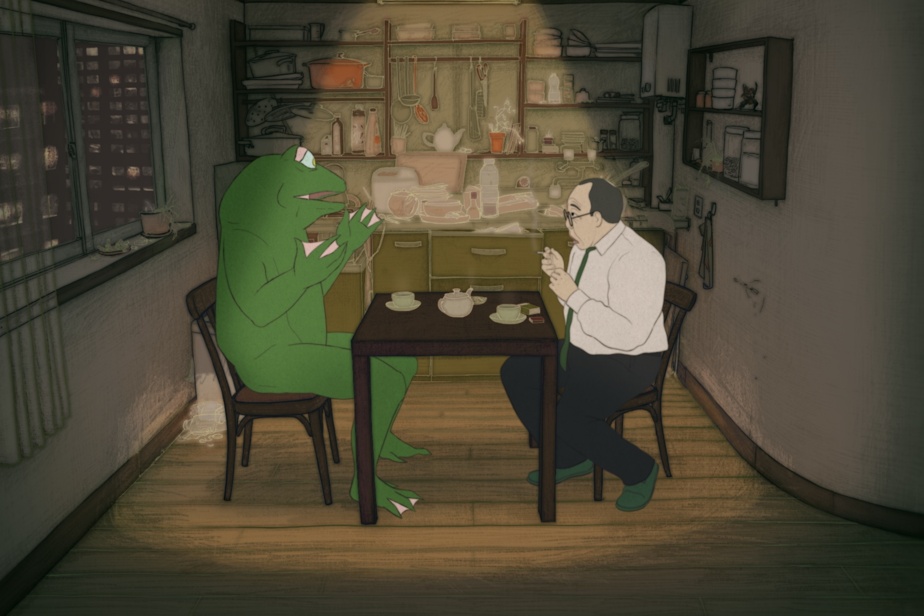For his first feature film, French director Pierre Földes bet on interweaving six short stories from a collection of Haruki Murakami. The work of the most read Japanese writer of his time combines the ordinary with the extraordinary, and this adaptation does it very well. But as is often the case when weaving an unnecessarily complex narrative, Blind Willows, Sleeping Woman proves uneven.
The film progresses by chapters, alternating the stories in a narrative structure that can be destabilizing at first glance, but which you get used to after all quickly. The earthquake and tsunami that struck Japan in 2011 serve as common experiences linking the protagonists, each plunged by these disasters into great periods of introspection and questioning. To accompany them on their dreamlike adventures, totem animals make appearances, adding to the eerie and mysterious atmosphere.
Frog, the anthropomorphic speaking frog who urges Katagiri to fight a giant worm lodged in the bowels of Tokyo in order to prevent an earthquake, is an exquisite and hilarious character. The philosophical batrachian quotes Nietzsche and pushes the debt collector to question the meaning of his life and to break with routine daily life.
Despite moments of grace, the whole film seems too long and some sequences, much less interesting than others. Note, among other things, a story of uninteresting teenage romance that breaks the rhythm and makes us frown, the female representation being camped in the archetypes.
Földes is also the author of the soundtrack, vaporous and minimalist, which accentuates the impression of floating on the periphery of reality. Animation is a perfect medium to express Murakami’s imagination and embody the magical realism that characterizes his work. Blind Willows, Sleeping Woman is sure to appeal to adult Studio Ghibli fans who love slightly twisted fables and movies with no beginning or end.















